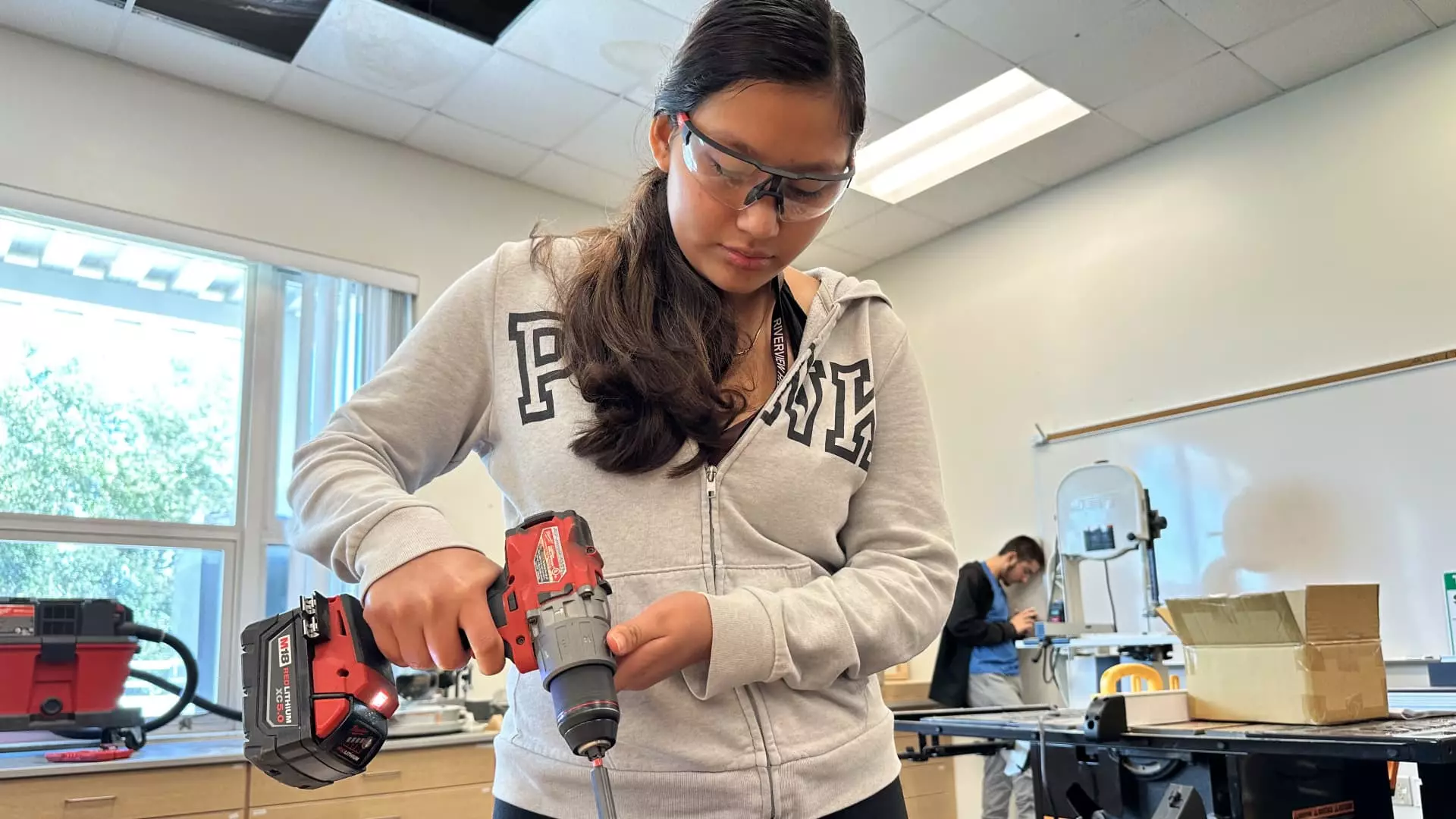In recent years, a significant paradigm shift has been underway in the realm of education and career preparedness. As the landscape of job opportunities evolves, so too do the preferences and aspirations of younger generations. For many students, traditional four-year college degrees no longer represent the quintessential path to success. Instead, vocational education is gaining traction as a viable alternative that not only addresses immediate labor shortages but also offers a promising future filled with opportunities.
Personal Stories: A New Perspective on Education
Angela Ramirez-Riojas, an 18-year-old senior at Riverview High School in Florida, embodies this emerging trend. Influenced by her grandfather’s work in construction, she found her passion in the practical application of skills rather than theoretical study. “I’ve enjoyed working with him,” she notes, highlighting the mentorship and respect she has for his craftsmanship. Despite being aware of the conventional expectation to attend college, Ramirez-Riojas views it more as a secondary opportunity, asserting, “College is a second option for me.”
Such sentiments resonate with her peers at Riverview, where the newly established vocational program in construction has quickly garnered popularity and demand. Principal Erin Haughey emphasizes that rather than serving as a last resort for underperforming students, the construction academy attracts driven individuals who are eager to learn essential skills and contribute to the community.
A Growing Demand for Skilled Trades
The rise in interest for vocational programs stems from a combination of personal ambitions and national labor market needs. With a labor shortage impending in the construction industry, the establishment of academies like the one at Riverview represents proactive measures taken to prepare students for high-paying, sustainable careers. According to industry reports, the American construction field will need more than half a million additional workers this year alone to meet growing demands. At the same time, many experienced tradespeople are retiring, leaving a significant gap that needs to be filled.
Funding from community builders, such as Neal Communities, helps support these vital educational initiatives. The financial backing facilitates hands-on learning experiences, empowering students with practical skills in carpentry, plumbing, and electrical work that cater to diversified roles in the industry—from construction management to human resources. This approach ensures that graduates are not only workforce-ready but are also knowledgeable about the various sectors within the construction trade.
The financial rewards of choosing a vocational pathway are compelling. Data indicates that new hires in construction boast median earnings of approximately $48,000 annually, surpassing new hires in many professional services. This economic advantage is a significant incentive for many young individuals considering their career options. As Ted Jenkin, a financial planner, points out, “The delta between white-collar jobs and good blue-collar jobs is not that big anymore.” As wage disparities diminish, so does the stigma surrounding skilled trade professions, pushing more students towards these lucrative job markets.
The shift in perception is further amplified by surveys indicating that a majority of high school students perceive trade schools and enrichment programs as equally valid—if not superior—to traditional college degrees. About 49% of respondents believe a high school diploma or vocational training is sufficient for their career aspirations. This growing belief significantly challenges the notion that a college degree is the only pathway to success.
The transformation occurring in educational preferences is commendable. It helps dismantle the long-standing stigma associated with trades and acknowledges the vital role skilled labor plays in the economy. The “toolbelt generation,” as some refer to it, represents a new wave of young individuals who actively choose practical education over traditional academic routes. This change not only fosters respect for trades but also enhances the opportunities available for high school graduates who may not wish to pursue extended education.
The rise of vocational training marks a pivotal moment in shaping future workforce dynamics and addressing ongoing labor shortages. Students are now navigating their futures with enhanced options that promise stability, growth, and community engagement. This trend reflects a broader recognition that success is multifaceted and that many paths can lead to fulfilling and prosperous careers. In an age where innovation and skills are paramount, vocational education stands out as a key player in shaping the economic landscape.

